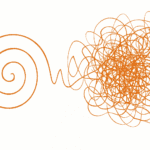Is it going to be game over for your product soon?
The Encyclopedia Britannica has ended print publication after 244 years.
I must admit I fell silent after hearing this piece of news earlier in the week. Anyone who admires books and has encountered the venerable encyclopedia in a home or library cannot fail to feel some sadness. The weathered leather covers, the musty pages, the scholarly style – it’s gone now.
As The Guardian put it: “Its legacy winds back through centuries and across continents, past the birth of America to the waning days of the Enlightenment. It is a record of humanity’s achievements in war and peace, art and science, exploration and discovery. It has been taken to represent the sum of all human knowledge.”
After some moments of reflection, however, a more rational thought took prominence: what took the printed Britannica so long to go?
The encyclopedia is not dying, remember: only its print version is. Britannica will survive as a digital-only product, accessed via a DVD version, a website, a subscription service, or an app on your tablet or mobile phone. Britannica’s future is no longer as a reference work, but as a multifaceted digital educational brand.
If you stop for a moment to think like a customer, you will realize why this development was both necessary and inevitable. The print version of Britannica consisted of 32 hefty volumes. It cost US$ 1,400 (KShs 115,000) to buy. The information in it was static – to update it, you had to buy a whole new set.
Contrast this with the DVD Britannica which includes two dictionaries and a thesaurus (US$ 30); or the annual online subscription of US$ 70. Here, the information is cheap and portable; easily updated; and contains embedded video and audio links. Which one were you going to buy for your family?
Another hallowed brand also underwent dramatic change recently. In the case of Kodak, the transition was more painful: it is now technically bankrupt. I wrote about Kodak’s “slow puncture” in the Business Daily recently: “When was the last time you bought photographic film, inserted it into a camera, took snaps, removed the film, took it to a photo lab, and waited for the film to be developed and prints made on special paper? Modern mass-market photography is just not like that, is it? These days we take snaps on our smartphones, upload the photos to “cloud” sites, and print only the exceptional results, if that.”
For both printed encyclopedias and photo film, thinking like a customer makes the need for change obvious. So which other long-standing products or businesses are about to be disrupted and will have to undergo significant transitions? Here’s a list from me:
The textbook. The atlas. The map. The camera. The watch. The calendar. The diary. The travel agency. The compass. The bank. The petrol station. The fax machine. The scanner. The business card. The bookshop. The library. The music store. The magazine. The television. The credit card. The personal computer. The post office. The e-mail. This newspaper. And many more.
Don’t believe me? Think like a consumer or user of the product, and look at the options increasingly available, and you will get the point. Every item on that list will have to change. Some will narrow their focus; some will get unbundled into different sub-products; some will morph into new incarnations; some will be absorbed by other products; some will simply fade away.
When customers are offered better utility, convenience and value, it’s usually game over for the older version. Those that survive will have to reinvent themselves to provide value in different forms, to customers who still appreciate them. I will always be a customer for the printed book, no matter how much more logical the electronic version is. But the drumbeats of change are getting louder.

Buy Sunny Bindra's new book
The X in CX
here »
Popular Posts
- You are who you hang out withSeptember 28, 2025
- Why your mother was right about your anxietyOctober 12, 2025
- Born knowing the waySeptember 21, 2025
- The balance sheet that mattersOctober 5, 2025
- The art of the CX rescueSeptember 14, 2025















